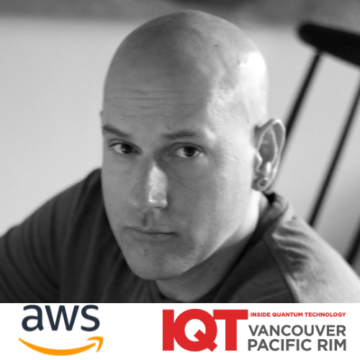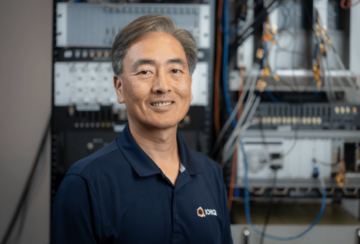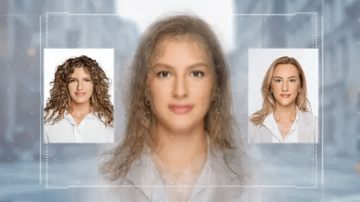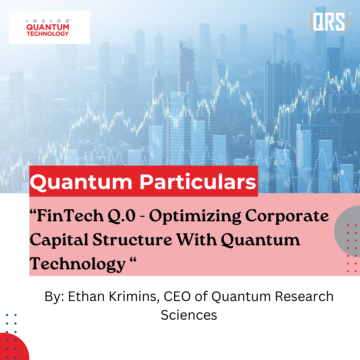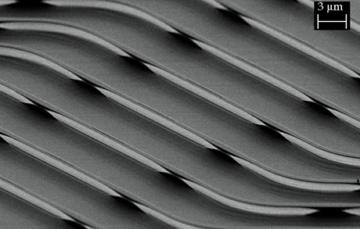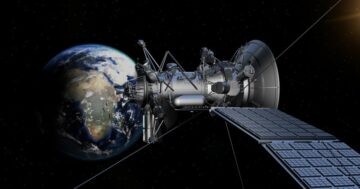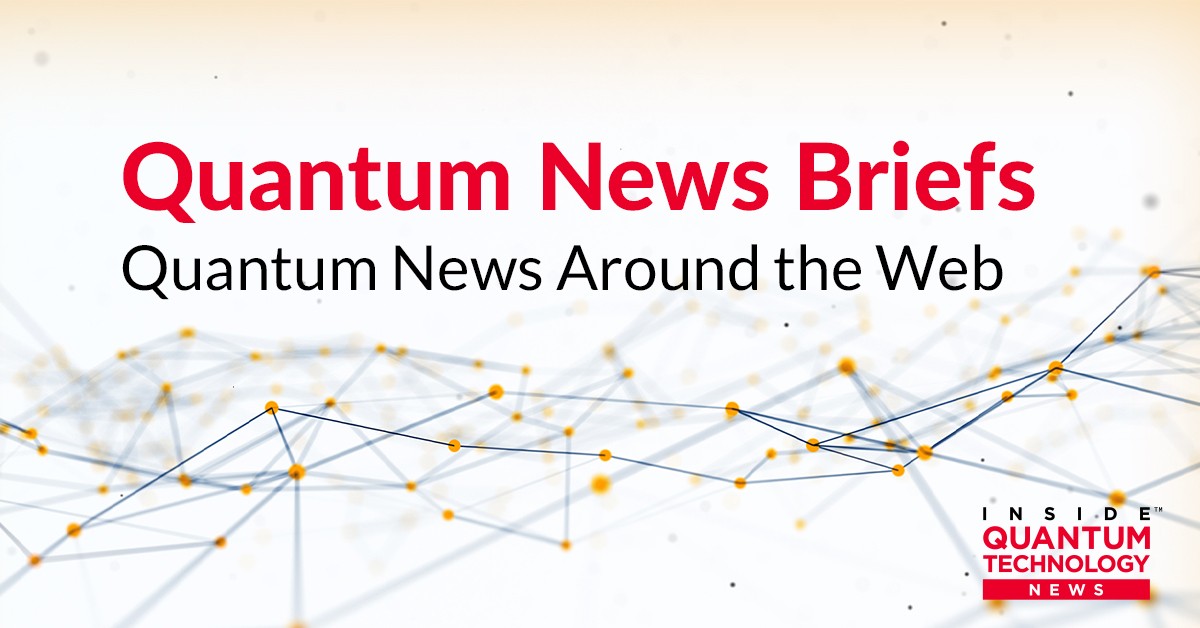
Quantum News Briefs: November 18, 2023:
Quantum AI Market projected to exceed $1.8 Billion by 2030

The global Quantum AI market, valued at $242.4 million in 2023, is projected to soar to $1.8 billion by 2030, growing at a CAGR of 34.1%. This market encompasses hardware, software, and services across various deployment models like on-premises and cloud-based, with machine learning, cryptography, and simulation applications. It’s experiencing significant growth due to advancements in quantum computing, particularly in sectors like finance, healthcare, and logistics. North America leads the market, driven by major tech companies and startups. The on-premises segment dominates, favored for its control and security in sensitive industries. The Quantum AI market’s growth reflects an increasing integration of AI and quantum computing, unlocking the potential for complex problem-solving and advanced data analytics.
Engineers develop a new detector system for quantum computing

Engineers and physicists from the Thomas Jefferson National Accelerator Facility and the University of Virginia have successfully tested a new photon detection system in a significant advancement for quantum computing. This system, crucial for laser-powered quantum computers, can accurately resolve over 100 photons every few microseconds, surpassing the current capability of detecting approximately 10 photons. The test involved a photon-based quantum computer setup using a pulsed laser, where the original photon detector was replaced with a trio of superconducting transition-edge sensor (TES) devices combined with a high-speed digitizer. This breakthrough demonstrates the feasibility of photonics-based quantum computing. It paves the way for implementing a “cubic phase gate,” a key component for more robust and fault-tolerant quantum computations. Such advancements have significant implications for generating unbreakable encryptions in military and financial sectors, as well as boosting the economy and enhancing national security.
Pioneering robot poised to reach new heights in quantum

In a new quantum research experiment, scientists at the University of Bristol’s Quantum Engineering Technology Labs and the Bristol Robotics Laboratory have unveiled a robotic arm designed to revolutionize quantum experiments. This innovative robotic arm, detailed in their recent publication in Advanced Science, enables experiments to be conducted with enhanced speed, precision, and complexity, potentially unlocking major breakthroughs in quantum technology. The robotic arm’s unique design allows for more adaptable and faster research, especially in experiments requiring highly constrained environments like ultra-low temperatures and atomic-scale interactions. Dr. Joe Smith, the lead author from the School of Electrical, Electronic, and Mechanical Engineering at the University of Bristol, emphasized the necessity of robotics in conducting such complex experiments, noting the potential of this technology in advancing quantum sensing experiments beyond the lab, particularly in applications like cell diagnostics. Inspired by the precision of robotic surgery, this innovation demonstrates the synergy of robotics and quantum technology, with co-author Dr. Krishna Coimbatore Balram highlighting the importance of cross-disciplinary developments. The robot’s ability to precisely position a high-strength magnet in three-dimensional space and navigate around obstacles, using tools like electrodes and lasers marks a significant step in advancing experimental setups in quantum research.
Research Collaboration takes a ‘materials-first’ approach to addressing the challenges posed by silicon spin qubits

A collaborative team led by the University of Rochester has embarked on a ‘materials-first’ approach to tackle the inherent challenges of silicon spin qubits, a promising element in the advancement of quantum computing. Funded by over $6.7 million from the US Air Force Office of Scientific Research (AFOSR), this multidisciplinary team, including experts from the University at Buffalo, SUNY Stony Brook, NY Creates, University of California, Los Angeles, and Lawrence Livermore National Laboratory, aims to address issues such as charge noise, valley splitting, and spatial variations in electron g-factor which currently hinder the stability and control of silicon spin qubits. Associate Professor of Physics at Rochester John Nichol, the project’s primary investigator, emphasizes the necessity of a materials-centric approach in understanding and resolving the challenges faced by these qubits. The AFOSR’s commitment to funding high-risk basic research is pivotal in achieving significant technological advancements, particularly in the realm of quantum computing. Nichol highlights this partnership’s unique blend of academic, national laboratory, and innovation hub expertise as crucial for advancing materials development and accelerating progress in quantum computing technology.
California State University Fullerton Offers Undergrad Course: “Quantum Computing for Everyone”
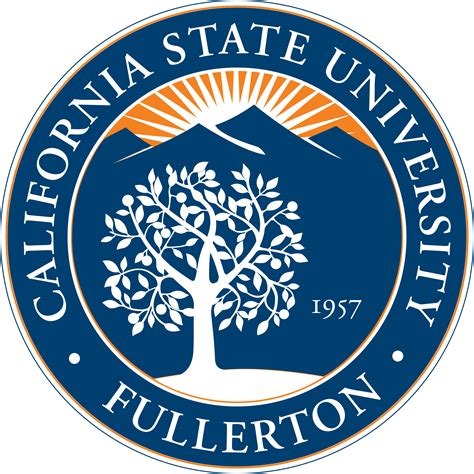
Cal State Fullerton is set to launch a college course titled “Quantum Computing for Everyone” in spring 2024, which introduces students from all disciplines to the burgeoning field of quantum computing. Developed and taught by Associate Professor of Physics Gina Passante, the course requires no prerequisites and is designed to be accessible to students with varying levels of mathematical knowledge. This inclusive course, a part of the university’s Department of Physics, underscores the importance of equity in accessing emerging technologies like quantum computing, which is poised to revolutionize multiple sectors, including technology, medicine, and encryption. The course’s multidisciplinary nature combines physics, computer science, and mathematics. It is part of a broader initiative to create a quantum literate workforce, addressing the anticipated demand in various job sectors. The university’s efforts, including potential future programs like a minor in quantum computing and advanced courses, align with the growing global emphasis on advancing quantum computing education and research.
Kenna Hughes-Castleberry is a staff writer at Inside Quantum Technology and the Science Communicator at JILA (a partnership between the University of Colorado Boulder and NIST). Her writing beats include deep tech, quantum computing, and AI. Her work has been featured in Scientific American, Discover Magazine, New Scientist, Ars Technica, and more.
- SEO Powered Content & PR Distribution. Get Amplified Today.
- PlatoData.Network Vertical Generative Ai. Empower Yourself. Access Here.
- PlatoAiStream. Web3 Intelligence. Knowledge Amplified. Access Here.
- PlatoESG. Carbon, CleanTech, Energy, Environment, Solar, Waste Management. Access Here.
- PlatoHealth. Biotech and Clinical Trials Intelligence. Access Here.
- Source: https://www.insidequantumtechnology.com/news-archive/quantum-news-briefs-november-18-2023-quantum-ai-market-projected-to-exceed-1-8-billion-by-2030-new-detector-system-developed-for-quantum-computing-pioneering-quantum-robot-and-more/
- :has
- :is
- :where
- 10
- 100
- 2023
- 2024
- 2030
- 7
- 8
- a
- ability
- academic
- accelerating
- accelerator
- accessible
- accessing
- accurately
- achieving
- across
- address
- addressing
- advanced
- advancement
- advancements
- advancing
- advisory
- AI
- aims
- AIR
- Air Force
- align
- All
- allows
- america
- American
- an
- analytics
- and
- Angeles
- Anticipated
- applications
- approach
- approximately
- ARM
- around
- AS
- Associate
- At
- author
- basic
- BE
- been
- between
- Beyond
- Billion
- Bing
- Blend
- boosting
- breakthrough
- breakthroughs
- bristol
- broader
- Buffalo
- burgeoning
- by
- CAGR
- california
- CAN
- capability
- cell
- challenges
- charge
- Co-Author
- collaboration
- collaborative
- College
- Colorado
- combined
- combines
- commitment
- Communications
- Companies
- complex
- complexity
- component
- computations
- computer
- computer science
- computers
- computing
- conducted
- conducting
- constrained
- consulting
- control
- course
- courses
- create
- creates
- crucial
- cryptography
- Current
- Currently
- data
- Data Analytics
- deep
- deep tech
- Demand
- demonstrates
- Department
- deployment
- dept
- Design
- designed
- detailed
- Detection
- develop
- developed
- Development
- developments
- Devices
- Diagnostics
- disciplines
- discover
- dominates
- download
- dr
- driven
- due
- economy
- Education
- efforts
- Electronic
- element
- embarked
- emerging
- emerging technologies
- emphasis
- emphasized
- emphasizes
- enables
- encompasses
- encryption
- Engineering
- enhanced
- enhancing
- environments
- equity
- especially
- Ether (ETH)
- Every
- exceed
- experiencing
- experiment
- experimental
- experiments
- expertise
- experts
- faced
- faster
- feasibility
- featured
- few
- field
- finance
- financial
- For
- Force
- from
- Fullerton
- funded
- funding
- future
- gate
- generating
- gif
- Global
- Growing
- Growth
- Hardware
- Have
- healthcare
- heights
- her
- High
- high-risk
- highlighting
- highlights
- highly
- hinder
- HTML
- HTTPS
- Hub
- image
- implementing
- implications
- importance
- in
- include
- Including
- Inclusive
- increasing
- industries
- industry
- inherent
- Initiative
- Innovation
- innovative
- inside
- Inside Quantum Technology
- inspired
- integration
- interactions
- Introduces
- involved
- issues
- IT
- ITS
- Job
- joe
- John
- jpg
- Key
- knowledge
- lab
- laboratory
- Labs
- laser
- lasers
- lawrence
- lead
- Leads
- learning
- Led
- levels
- like
- Limited
- literate
- logistics
- LOOKS
- los
- Los Angeles
- machine
- machine learning
- magazine
- major
- Market
- materials
- mathematical
- mathematics
- max-width
- mechanical
- mechanical engineering
- medicine
- Military
- million
- minor
- models
- more
- multidisciplinary
- multiple
- National
- national security
- Nature
- Navigate
- necessity
- New
- news
- nist
- no
- Noise
- North
- north america
- noting
- nov
- November
- NY
- obstacles
- of
- Offers
- Office
- on
- original
- over
- part
- particularly
- Partnership
- paves
- phase
- Photons
- Physics
- Pioneering
- pivotal
- plato
- Plato Data Intelligence
- PlatoData
- poised
- posed
- position
- posted
- potential
- potentially
- precisely
- Precision
- prerequisites
- primary
- private
- problem-solving
- Professor
- Programs
- Progress
- projected
- projects
- promising
- Publication
- Quantum
- Quantum AI
- Quantum Computer
- quantum computers
- quantum computing
- quantum research
- quantum technology
- qubits
- reach
- realm
- recent
- reflects
- replaced
- requires
- research
- resolve
- resolving
- Resources
- revolutionize
- robot
- Robotic
- robotics
- robust
- School
- Science
- scientific
- Scientific Research
- Scientist
- scientists
- Sectors
- security
- segment
- sensitive
- Services
- set
- setup
- significant
- Silicon
- simulation
- smith
- Software
- Space
- Spatial
- speed
- Spin
- spin qubits
- spring
- Stability
- Staff
- staff writer
- Startups
- State
- Step
- Students
- such
- suny
- Surgery
- surpassing
- synergy
- system
- tackle
- takes
- taught
- team
- tech
- tech companies
- technological
- Technologies
- Technology
- test
- The
- their
- These
- this
- three-dimensional
- titled
- to
- tools
- trio
- true
- underscores
- understanding
- unique
- university
- University of California
- unlocking
- us
- using
- Valley
- valued
- variations
- various
- varying
- virginia
- was
- Way..
- WELL
- which
- with
- Work
- Workforce
- writer
- writing
- Yahoo
- zephyrnet


